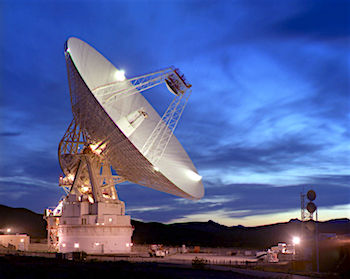 October 4, 2018: Team Initiates Plan to Recover Oppy, Orbiter Sends Postcard, Storm Ends: As the global storm that wrapped the Red Planet in a cloud of dust since late June finally gave up the ghost in September, the sky continued to clear over Endeavour Crater and the Mars Exploration Rovers (MER) mission initiated the NASA-approved two-step plan to reestablish contact with Opportunity.
October 4, 2018: Team Initiates Plan to Recover Oppy, Orbiter Sends Postcard, Storm Ends: As the global storm that wrapped the Red Planet in a cloud of dust since late June finally gave up the ghost in September, the sky continued to clear over Endeavour Crater and the Mars Exploration Rovers (MER) mission initiated the NASA-approved two-step plan to reestablish contact with Opportunity.
The mission operations team at the Jet Propulsion Laboratory (JPL), home to all of NASA’s Mars spacecraft, launched the first phase of the strategy on September 11th, by increasing attempts to search for Opportunity’s signal from three times a week to multiple times each day and electronically nudge the rover awake. The team also began listening and looking for the rover’s signal over a broader range of times and frequencies recorded by the Deep Space Network’s (DSN’s) most sensitive radio receivers. But the nearly 15-year-old pioneer explorer has not yet phoned home.
(…)
Most mission operations team members quickly concluded then that they would be waiting for a good long while. “We knew a few days after we lost contact that it was going to be three, four, five months before we might her from Opportunity again,” said JPL System Engineer Michael Staab. One of the mission’s four flight directors, he was tapped to be lead engineer for dust storm ops a couple of weeks before the “mother of all dust storms,” as he described it, stopped the rover in her tracks.
(…)
September’s end marked 112 sols or Martian days without communication. Over the past 14 years and nine months, this team has never gone long without communicating with Opportunity, and never this long. They have no idea of the rover’s current state of health or how many faults she has tripped, or the state of her batteries, or how dirty her solar arrays are. “The team is very worried about the future of Opportunity,” acknowledged MER Project Manager John Callas, of JPL.
The second step of the strategy to recover the rover, known as passive listening, an expanded version of what the ops team has been doing since losing contact in June, is currently scheduled to begin in a few weeks, near the end of October. This phase – which will run at least through January 2019 – will essentially continue ‘keeping an ear out’ for Opportunity through the DSN’s global array of sensitive radio receivers around Earth.
“Walking away anytime before the end of January would mean we could be leaving a potentially perfectly working spacecraft on the surface because we’re impatient,” said Staab… [Much more at link]








